This past Saturday, my wife, son and about fifty other friends mostly from Calvary Baptist Church spent the day at the Oshawa Curling Club enjoying the great game of curling. It was a rather relaxed bonspiel with each team playing four games throughout the day with lots of time to eat and socialize between games. If you have never curled before you really should give it a try. It’s a wonderful game that’s lots of fun and couples can play together as it’s not a particularly physical game, although you can work up a sweat sweeping!
Curling, like golf, is a game with Scottish origin dating back to medieval times with the first written mention of the sport in 1541 and the first paintings depicting curling trace back to 1565 Scotland. The first curling club was founded in 1716 in Scotland and it is still active today! The Royal Montreal Curling Club is the oldest in Canada and has been operating since 1807. The Oshawa Curling Club was founded in 1882.
Curling is a rather “simple” game which involves sliding a 44 pound granite stone along about 150 feet of ice and having that rock stop as close as possible to the button which is essentially the bulls-eye of a target 12 feet in diameter. After each of the four members of the two teams playing have thrown two stones each in alternating order, the team with the rock closest to the button gets a point for each stone that is closer to the button than any of the other team’s stones.
Curling Stones have changed greatly over the years from flat river stones to the high-tech $650.00, forty four pound hunks of granite they are today. The Canadian Curling Stone Company is a world-wide leader in curling stone manufacturing with most of the stones used in world-class bonspiels coming from the Canadian company.
The brooms used for sweeping the rocks down the ice, to help control the distance & curl of the rock, have also changed a lot over the years, from the old corn brooms of the past to the synthetic brushless brooms used today. In fact the “brooms” used today are actually brushes, but you will never hear hem referred to as anything but brooms.
Although curling predated the invention of indoor curling rinks, virtually 100% of curling matches now take place inside a curling rink where the ice conditions are perfect. Here is an inside view of the Oshawa Curling Club which has been in operation since 1882 and has hosted several national & international bonspiels over its many years of operation.
As this is a photography blog please take time to notice the difference between the two quite similar images above. The first is from a higher angle of view using a small aperture to create more depth of field (keeping everything in focus) and making the curling rink the object of the image. The second image has a much lower angle of view and larger aperture to create a very shallow depth of field. Although the composition of the two is similar the object of the second clearly becomes the curling stones. Whenever you are out shooting, remember to shoot the same scene from different angles of view and at differing apertures. Differing angles of view and apertures can make similarly composed images look completely different from each other.
To end this post, here are a few shots of curlers pushing off the hack and delivering the stone down the sheet of ice presumably to stop on the button. These images were all taken with a Canon 1D MkIII and 70-200 f/2.8 IS lens. I believe the following images were all taken at f/2.8 to create a shallow depth of field, blurring the distracting back ground elements that are often found when in an indoor setting. The problem with shooting at f/2.8 is that the depth of field is so shallow it is hard to get all of the person in perfect focus. This problem is minimized by using the AI Servo focusing mode which tracks the object in the viewfinder and continuously adjusts the focus to keep the object sharp.
.
.
.
.
.
.

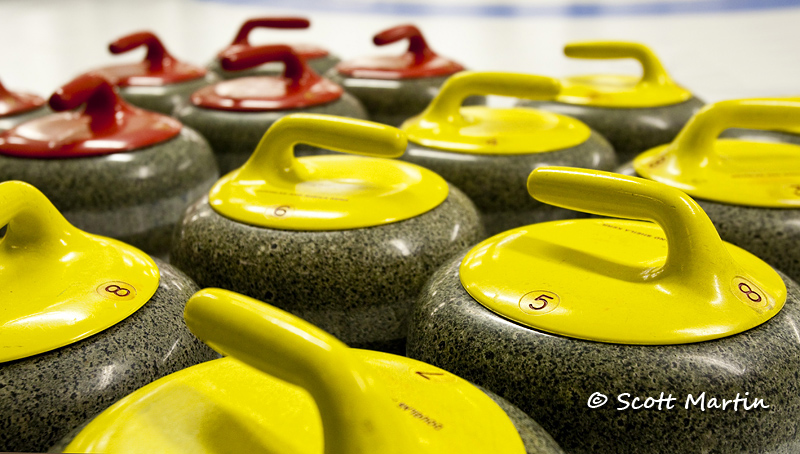

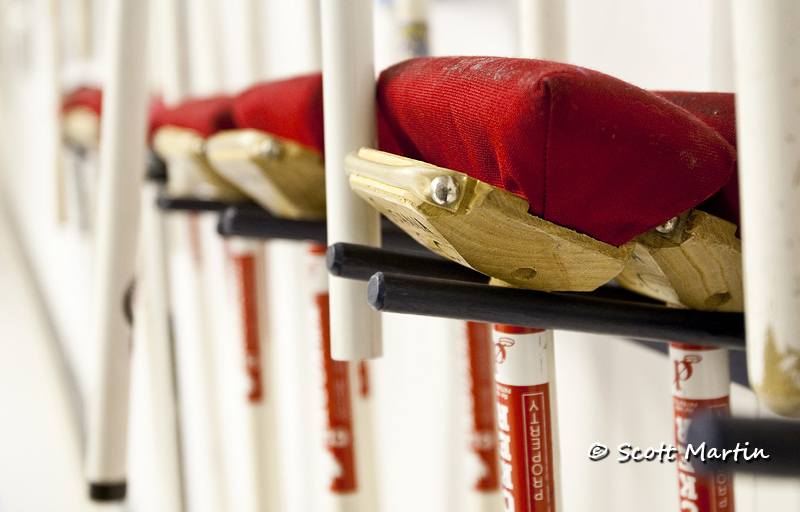
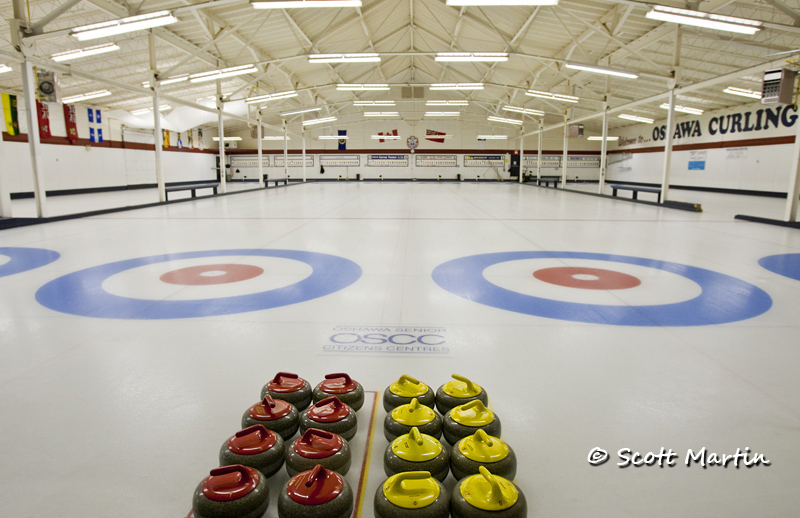
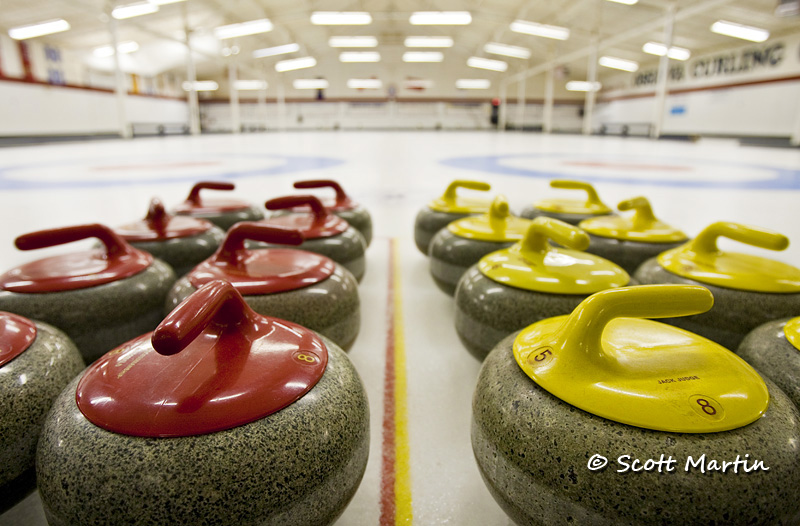
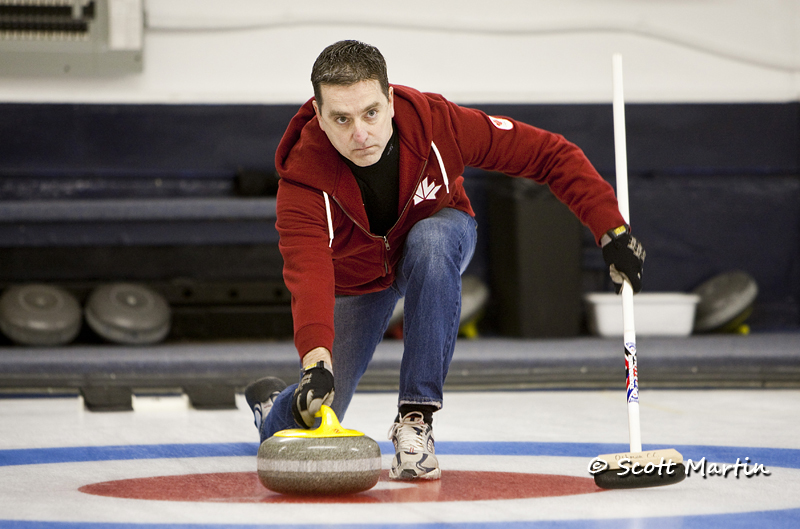
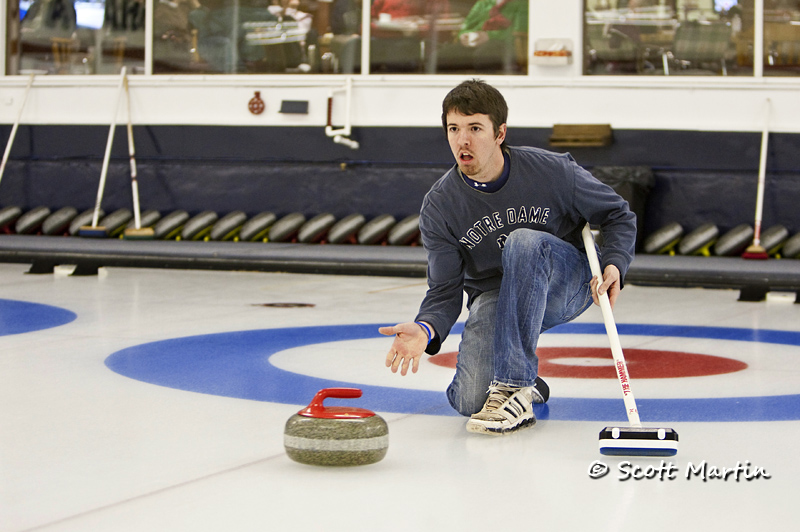
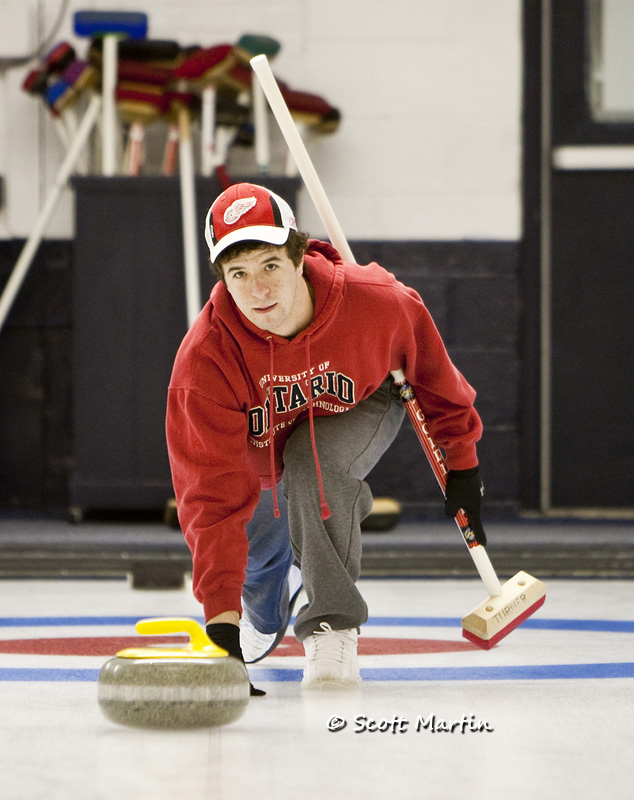
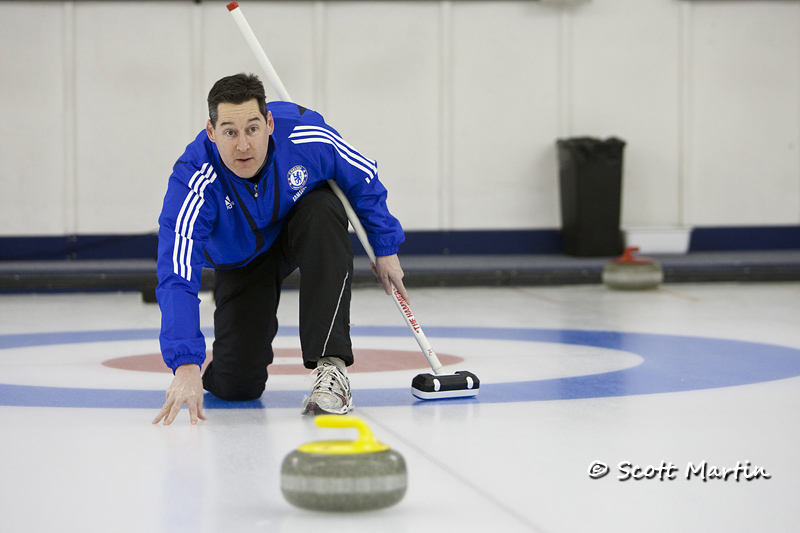
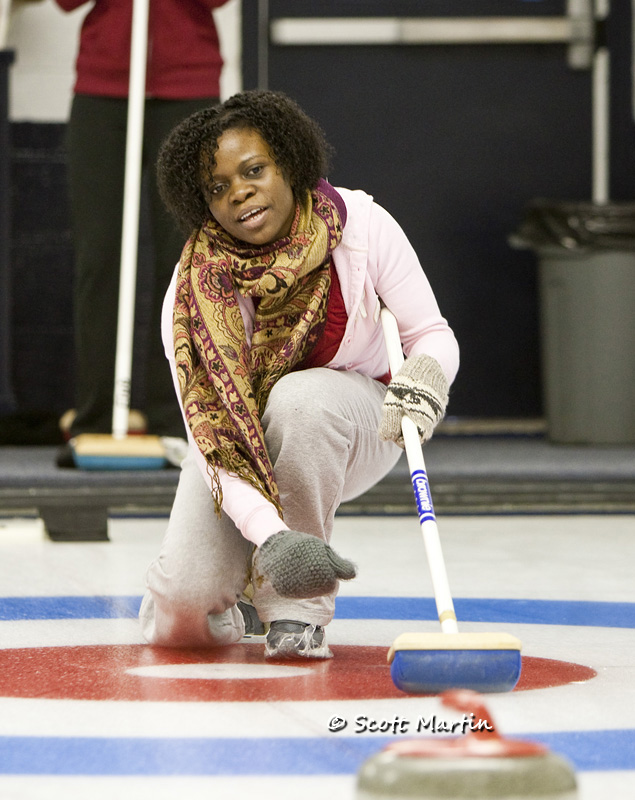
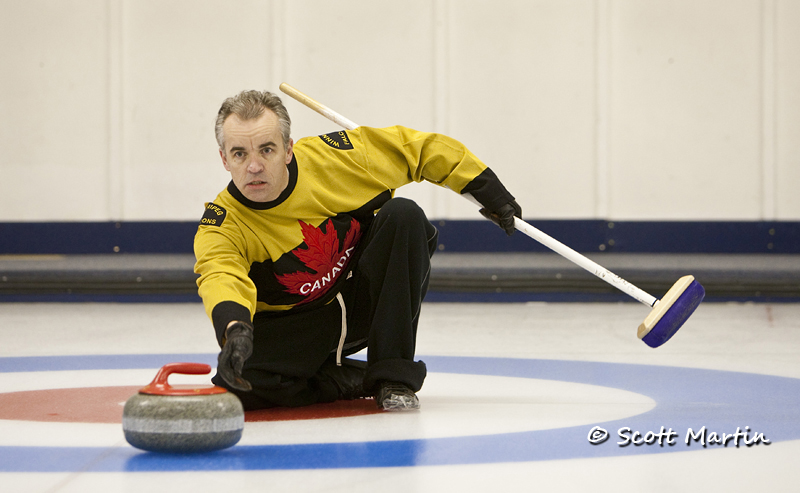
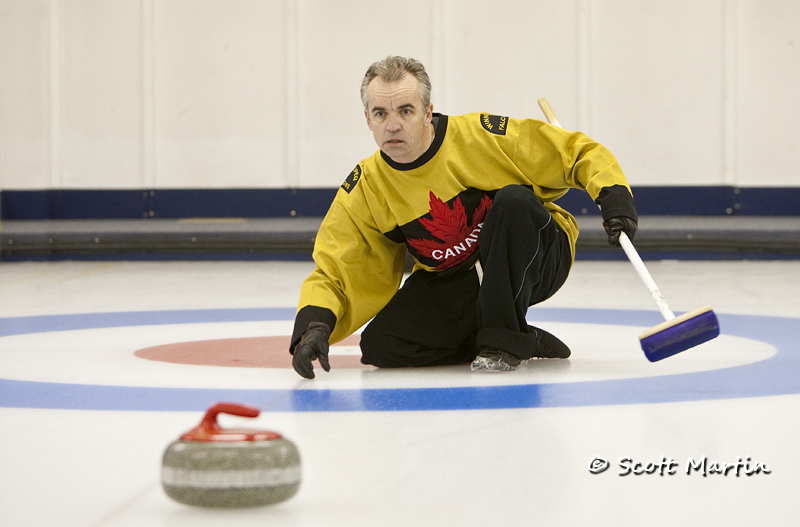
You’re a curler too! During the early part of my career in Northern Ontario, it was a wonderful way to pass the time in then winter. I even participated in the odd bonspiel. These are classy pictures, each one telling an individual story which is what they are supposed to do. Nicely done!
The coincidence file is bulging Arni! I’m glad you liked the images and it was nice to use some shorter glass for a change.